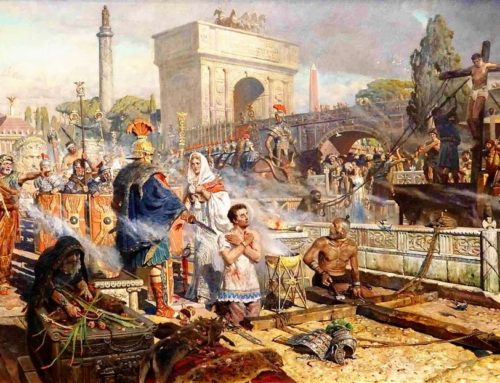Although it’s hard to believe, the catacombs still hide treasures that date back almost 20 centuries from the time they were first used. The catacombs of Saint Callixtus in Rome are a perfect example.
Although it’s hard to believe, the catacombs still hide treasures that date back almost 20 centuries from the time they were first used. The catacombs of Saint Callixtus in Rome are a perfect example.
About 50 feet underground, and close to the famous Papal crypts, archaeologists found this: It’s Orpheus a character from pagan mythology that was incorporated into Christian iconography.
FABRIZIO BISCONTI
Pontifical Commission for Sacred Archaeology
“In the center is Orpheus, the mythical Thracian singer who tamed animals with the sound of his lyre. Naturally, for Christians, it symbolized Christ, the Logos, who tamed even the most ferocious animals.”
December 8th, marks the beginning of the Jubilee of Mercy. The Vatican is hoping to promote the catacombs as a main point of attraction for pilgrims who will make their way to Rome from around the world.
CARD. GIANFRANCO RAVASI
President, Pontifical Commission for Sacred Archaeology
“This restoration commemorates, in a sense, an important event for the Church: the Jubilee of Mercy, the Holy Year.”
Along with the new frescoes, the catacombs promise even more. Certain artworks have been found affirming that pilgrims from the Middle Ages visited the catacombs to honor the lives of martyrs.
In the last 20 years digging has continued in the vicinity, which paved the way towards a new museum with these artworks, inscriptions and reliefs.
MATTEO BRACONI
Museo della Torreta
“We have opened a new museum that contains a story made of marble. It is the story of sarcophagus fragments from the catacombs of Saint Callixtus as well as from the surrounding area.”
Stretching across more than 150,000 square meters and about 12 miles deep, it served as a cemetery for hundreds of thousands of Christians since the 2nd century AD. Its historical relevance is priceless since it preserves the living memory of the ancient presence of Christians in the Eternal City.



Leave A Comment
You must be logged in to post a comment.